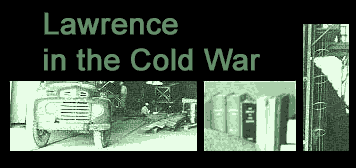

|
|
"As
long as our nation requires strong armed forces we must stockpile and
continue intensive
|
"To be credible, the project would have to be big."—Lawrence [ca. 1947] |
|
|
Lawrence propagated these views not from official advisory positions but as a nuclear physicist of high reputation. He developed personal connections with members of the AEC, military leaders, and congressmen, and sat on the board of directors for several large corporations. He proved adept at maneuvering in Washington, sometimes bypassing the AEC and going straight to the congressional Joint Committee on Atomic Energy for approval of pet projects. His multiple obligations and repeated trips to Washington and New York made his frequent illnesses worse and gave him chronic ulcerative colitis. |
||
|
|
|
||||
"A very great change has taken place in the climate of opinion...two experienced promoters have been at work, i.e., Ernest Lawrence and Edward Teller." —Oppenheimer
to James Conant, |
Lawrence knew a powerful source of neutrons was needed to produce plutonium for A-bombs and tritium for H-bombs. Playing to his strengths, he proposed building a linear accelerator to produce the neutrons. As usual, Lawrence thought big. A prototype, called Mark I, would deliver high intensity 25-MeV deuterons followed by a full-scale Mark II for 350-MeV deuterons. The beam current in Mark II would be one ampere, a million times that of the 184-inch synchrocyclotron. The device was planned to stretch over 1,500 feet. A site for the Mark I, code-named the Materials Testing Accelerator (MTA), was found at the Livermore Auxiliary Naval Air Station about 45 miles from Berkeley. However, as the costs of Mark I mounted to $21 million by mid-1952, the AEC canceled plans for Mark II in favor of cheaper neutron sources.
|
|
|
Although the MTA project died, it gave the Rad Lab valuable experience with high-volume vacuums and exotic electrical engineering. A more concrete legacy was the Livermore site. The H-bomb program was taxing the capabilities of Los Alamos, where the staff was working overtime. Edward Teller agitated for a still stronger effort, and proposed the establishment of a second weapons lab to take the load off Los Alamos and apply a competitive spur. The idea, backed by Teller's allies in Congress and the military, found a strong supporter in Lawrence. In June 1952, the AEC approved Lawrence's proposal to establish a second nuclear weapons lab at Livermore. By mid-1954, the Livermore lab had over 1,000 total staff, including more than 400 scientists and engineers. It remained an adjunct of the Berkeley Rad Lab until 1971, when anti-war protests resulted in institutional separation and a new name, the Lawrence Livermore Laboratory. |
||||
|
|
"Doctor [Oppenheimer], is it true that from 1943 until recently, at least, you were the most influential scientist in the atomic energy field in this country?" —"I think Lawrence probably had in many ways more influence." —Roger
Robb, counsel for the personnel security board, |
In 1954 the U.S. tested a thermonuclear device in the South Pacific. It produced an unexpectedly powerful explosion and strewed radioactive fallout beyond the boundaries of the test site. A long-running controversy ensued over the dangers of fallout from nuclear bomb tests. Lawrence argued for continued testing. He thought it was a moral imperative to develop "clean" bombs that could be used in a nuclear war without producing much deadly fallout. Failure to develop such weapons, he told President Eisenhower, "could truly be a ‘crime against humanity.'" |
"If we stop testing...we will have to use weapons that kill 50 million people that need not have been killed." |
|
|
|
||||